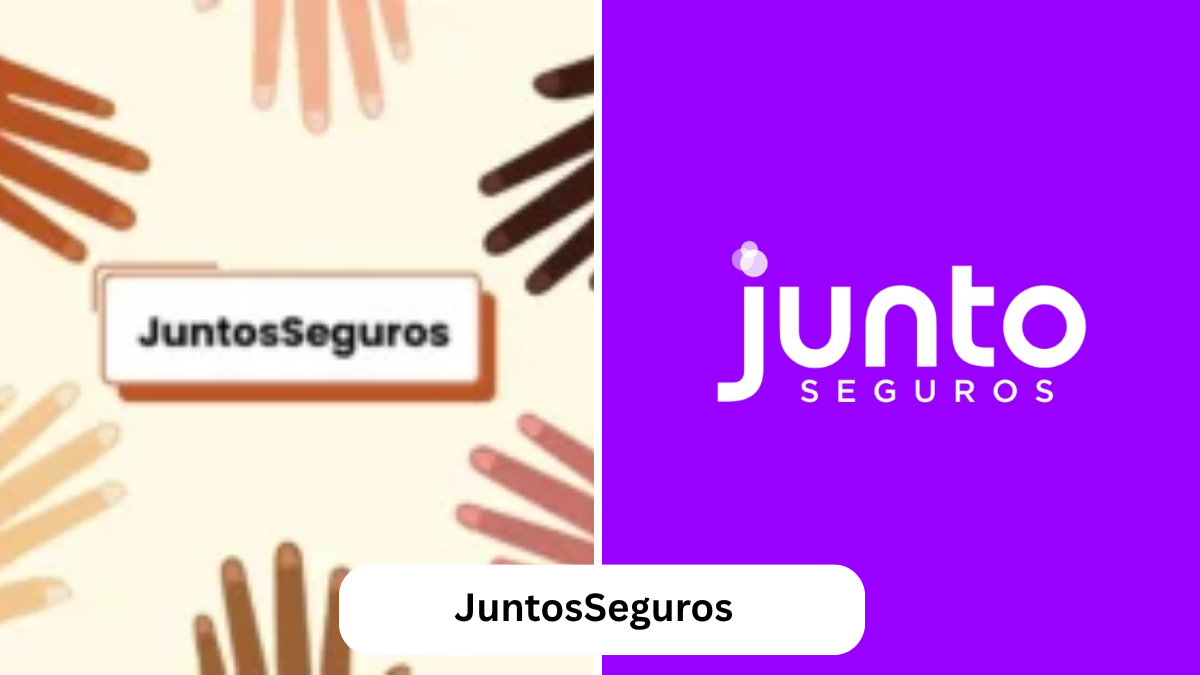What “JuntosSeguros” Represents in Today’s World
The term “JuntosSeguros” blends two powerful ideas: unity and protection. Translating roughly to “safe together,” it expresses a philosophy that has gained increasing relevance in a world where communities, organizations, and individuals depend more than ever on mutual support. Although the phrase may relate to different industries—insurance, community safety programs, digital security initiatives, or social campaigns—the core concept remains consistent: people and institutions are stronger when they cooperate. In an era shaped by technological change, global movements, and shifting social expectations, the value of collective responsibility stands out clearly. “JuntosSeguros” reflects this sentiment by emphasizing that safety is not a solitary pursuit but a shared journey shaped by knowledge, preparation, and empathy.
As societies evolve, so do the challenges they face. From natural disasters to financial uncertainties, from cyber risks to public health issues, modern threats rarely affect just one person. They ripple outward, impacting families, companies, and entire cities. This interconnectedness highlights why the notion behind “JuntosSeguros” carries so much weight: it recognizes that meaningful security cannot exist without cooperation. Whether the term is used in reference to a coordinated insurance model, a public safety campaign, or a digital trust platform, it signifies a commitment to building structures that protect everyone involved. That vision is essential in shaping a more resilient future.
The Evolution of Collective Security Concepts
To understand the deeper meaning of “JuntosSeguros”, it helps to consider how ideas of security have evolved. Historically, communities relied on local networks—neighbors, families, and small groups providing mutual protection. Over time, as populations grew and societies became more complex, formal institutions emerged to take on some of these responsibilities. Insurance companies, government agencies, and technological systems began playing larger roles in safeguarding people. Yet despite these advancements, many modern systems still rely on collaboration at their core. Insurance pools work because many people contribute to protect the few who need support. Public health initiatives succeed when communities act collectively. Cybersecurity programs become stronger when users share information and follow best practices.
“JuntosSeguros” can be seen as the modern expression of this long tradition. It acknowledges the importance of organizational frameworks while also recognizing the irreplaceable role of human connection. In today’s interconnected environment, security is no longer just about locking doors or signing policies; it is about creating robust networks that learn, adapt, and respond to change. In this sense, the idea behind “JuntosSeguros” functions as both a philosophy and a practical strategy. It encourages individuals and institutions to think beyond personal boundaries and embrace shared responsibility. That mindset is increasingly crucial in a world where collective action often determines resilience.
The Role of Technology in the JuntosSeguros Vision
Technology has transformed nearly every aspect of security, and the concept of “JuntosSeguros” gains new depth in this digital age. From smart devices that monitor homes to platforms that allow communities to report local risks in real time, innovation shapes how people stay informed and protected. At the same time, technology introduces new challenges that require careful management. Digital privacy concerns, identity protection, and cyber threats demand coordinated solutions. The idea that we are “safe together” becomes even more relevant when navigating online environments where individual actions can influence the safety of entire networks.
Modern security technology often relies on shared participation. For example, collaborative mapping tools depend on community contributions to keep information accurate. Fraud detection systems improve as more users join and generate data that helps identify patterns. Even disaster response systems become more effective when individuals report incidents quickly. In all of these cases, the idea of “JuntosSeguros” comes to life through the way people and technology interact. This blend of human and digital cooperation not only enhances safety but also fosters a sense of belonging. People feel more empowered when they play an active role in protecting themselves and others.
Building Trust Through Community Engagement
At the heart of “JuntosSeguros” is trust—a critical element in any system that relies on collaboration. Communities function best when members believe in one another and in the institutions that serve them. This trust develops through transparency, communication, and shared experiences. Campaigns or initiatives built around the “JuntosSeguros” mindset prioritize open dialogue and clear messaging to help people understand their role in maintaining collective well-being. Whether the context is neighborhood safety, financial planning, or preparing for emergencies, effective communication reduces anxiety and strengthens participation.
Trust also grows when solutions are accessible and inclusive. A community cannot be “safe together” if only some people have access to resources. Therefore, initiatives inspired by the principles of “JuntosSeguros” often aim to reach individuals from diverse backgrounds, ensuring that information, support, and tools are available to everyone. This inclusiveness not only improves overall security but also enhances social cohesion. When people feel seen and supported, they are more likely to contribute positively to the ecosystem around them. Ultimately, the idea of “JuntosSeguros” thrives in environments that celebrate diversity, shared goals, and collective strength.
The Future Impact of the JuntosSeguros Philosophy
Looking ahead, the “JuntosSeguros” concept is poised to influence many sectors. In the insurance and financial world, the phrase may inspire more user-centric models that prioritize education, personalized services, and community involvement. Companies may design products that encourage individuals to take an active role in safeguarding their wellbeing while benefiting from the stability of a shared protection structure. In the realm of public safety, “JuntosSeguros” could inspire programs that integrate community input, technology, and government coordination to create safer urban and rural environments.
Digital platforms are also likely to embrace variations of the “JuntosSeguros” approach. As cybersecurity becomes increasingly important, emphasizing collective responsibility can help individuals understand the impact of their online behavior. Encouraging users to maintain safe digital practices contributes not just to personal protection but to the security of entire online systems. Moreover, educational efforts grounded in the “JuntosSeguros” idea can help future generations develop a stronger awareness of risk management, empathy, and community cooperation.
Ultimately, the power of “JuntosSeguros” lies in its simplicity and adaptability. It can be applied to nearly any environment where cooperation enhances safety. Whether in physical communities, digital spaces, global networks, or professional organizations, the message remains the same: security is most effective when people work together.
FAQs
1. What does “JuntosSeguros” mean?
“JuntosSeguros” translates to “safe together,” representing the idea that collective action and cooperation create stronger protection for individuals and communities.
2. Is “JuntosSeguros” related to a specific industry?
The term can be used in various contexts, including insurance, community safety campaigns, digital security initiatives, and social programs focused on collective well-being.
3. Why is cooperation important for security?
Many modern risks affect groups rather than individuals. Shared strategies, information exchange, and mutual support help create more effective and resilient protective systems.
4. How does technology connect with the “JuntosSeguros” concept?
Digital tools enhance collective safety by enabling real-time communication, monitoring, and risk detection, all of which depend on participation from users and communities.
5. Can the “JuntosSeguros” philosophy be applied to everyday life?
Yes. From looking out for neighbors to practicing safe online habits, many daily actions reflect the principle of staying “safe together” through awareness and cooperation.




